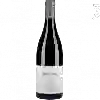
Winery Veuve Aubert AinéBourgogne Cuvée Romane
This wine generally goes well with poultry, beef or veal.
Food and wine pairings with Bourgogne Cuvée Romane
Pairings that work perfectly with Bourgogne Cuvée Romane
Original food and wine pairings with Bourgogne Cuvée Romane
The Bourgogne Cuvée Romane of Winery Veuve Aubert Ainé matches generally quite well with dishes of beef, veal or game (deer, venison) such as recipes of blanquette of monkfish with small vegetables, beef bourguignon with cookéo or old-fashioned venison stew.
Details and technical informations about Winery Veuve Aubert Ainé's Bourgogne Cuvée Romane.
Discover the grape variety: Pinot noir
Pinot noir is an important red grape variety in Burgundy and Champagne, and its reputation is well known! Great wines such as the Domaine de la Romanée Conti elaborate their wines from this famous grape variety, and make it a great variety. When properly vinified, pinot noit produces red wines of great finesse, with a wide range of aromas depending on its advancement (fruit, undergrowth, leather). it is also the only red grape variety authorized in Alsace. Pinot Noir is not easily cultivated beyond our borders, although it has enjoyed some success in Oregon, the United States, Australia and New Zealand.
Informations about the Winery Veuve Aubert Ainé
The Winery Veuve Aubert Ainé is one of of the world's greatest estates. It offers 21 wines for sale in the of Burgundy to come and discover on site or to buy online.
The wine region of Burgundy
Bourgogne is the catch-all regional appellation title of the Burgundy wine region in eastern France ("Bourgogne" is the French name for Burgundy). Burgundy has a Complex and comprehensive appellation system; counting Premier Cru and Grand Cru titles, the region has over 700 appellation titles for its wines. Thus, Burgundy wines often come from one Vineyard (or several separate vineyards) without an appellation title specific to the region, Village or even vineyard. A standard Burgundy wine may be made from grapes grown in one or more of Burgundy's 300 communes.
The word of the wine: Lactic (acid)
Acid obtained by malolactic fermentation.














